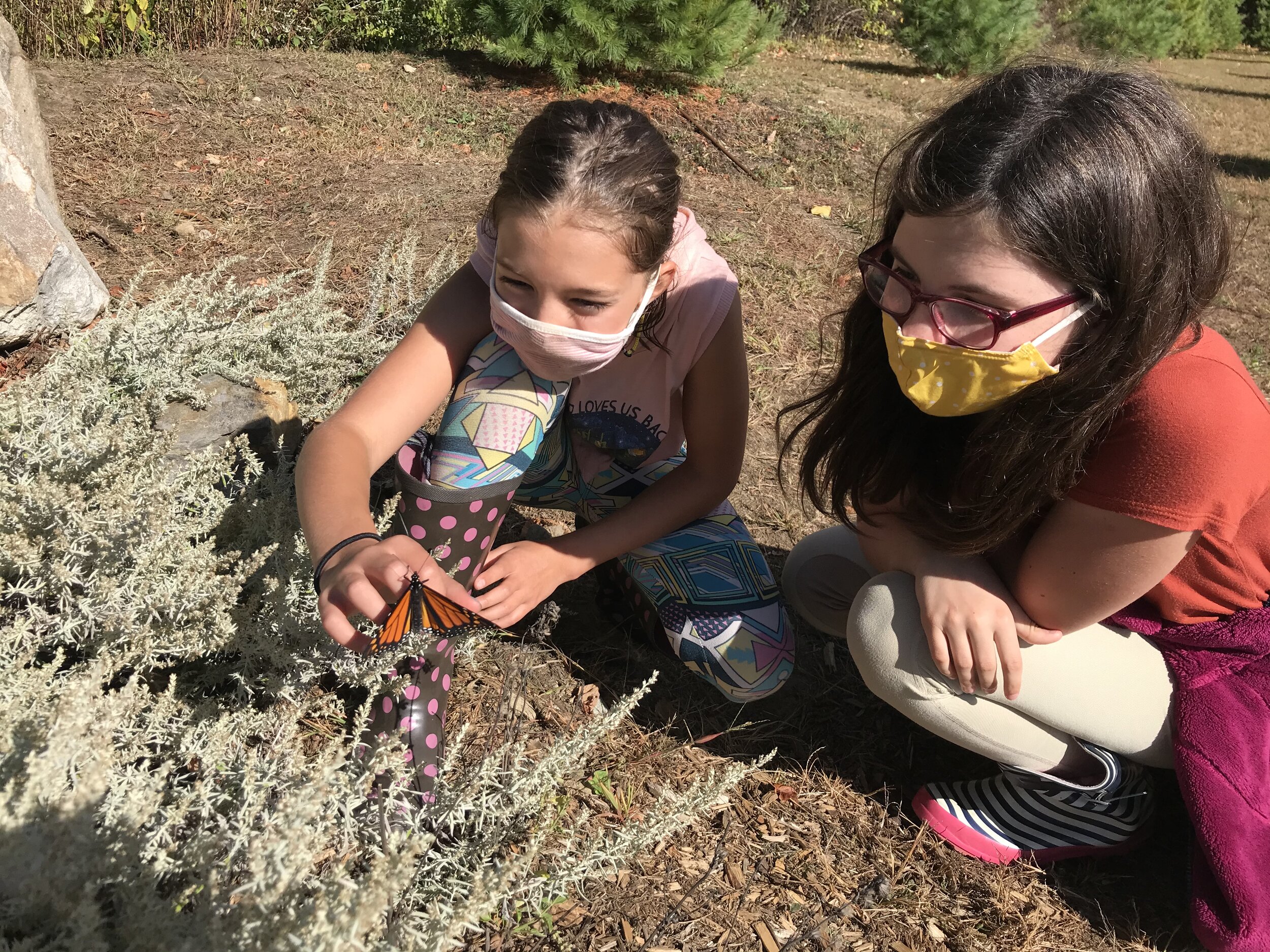During 2020, Lower School Spanish Guide Andrea Seddon saw an opportunity to help Monarch butterflies and enrich the Hollis Montessori School’s Spanish curriculum at the same time. She explains that children in the Children’s House and Lower Elementary classes have been learning about the life cycle of the mariposa. In the Upper Elementary class, there have been discussions of migration, of both human and of the great migration of the Monarcas.
“Each fall, hundreds of millions of monarch butterflies migrate from the United States and Canada to mountains in central Mexico where they wait out the winter until conditions favor a return flight in the spring,” states Monarch Watch; a nonprofit education, conservation, and research program based at the University of Kansas that focuses on the monarch butterfly.
Habitat loss in Mexico as well as in the breeding areas in the United States threatens the entire species, so to do their part, Hollis Montessori School planted a pollinator garden on the east side of the property. Señora Andrea enlisted the help of students and her family to dig a pollinator garden out of the edge of the property. Anyone who has tried to farm in New England understands why there are so many rock walls… digging in this soil is not an easy task! That hard work was rewarded in July of 2020 when the school was designated an official Monarch Waystation.
Since then, 42 other New Hampshire families, schools, and municipalities have achieved this status. These waystations are places that provide resources necessary for monarchs to produce successive generations and sustain their migration, such as milkweed plants for the monarch caterpillars and the nectar-producing flowering plants to sustain the butterflies for their nearly 3,000 mile migration to Michoacan, Mexico.
Besides digging in rocky soil, HMS students use beautiful materials in the classroom to learn more about the different stages of life and migration as well as viewing these stages up close with the help of Señora’s butterfly habitat.
Students watch the transition from huevo to oruga and then from crisálida to mariposa. True magic! So much follow-up work has been produced after these observations! The school also participates in the tagging of the mariposas. Small, circular tags are stuck to the wings and do not interfere with flight. Monarch Watch explains that tagging helps answer questions about the origins of monarchs that reach Mexico, the timing and pace of the migration, mortality during the migration, and changes in geographic distribution.
“The Hollis Montessori pollinator garden is alive and well!” proclaims Seddon. “Since it’s creation, we have added student-made stepping stones that were an auction item from last year’s school fundraiser and the plants are really establishing themselves. Before all of this started, our head of school, Kari Headington, had offered to weed an area alongside the parking lot to ‘freshen it up’ until she realized that it was milkweed. In fact, we have so much milkweed now, that we will be passing along seed pods to the State!”
NH Fish & Game and the UNH Cooperative Extension are calling on New Hampshire residents for milkweed pods to plant along highways to create a corridor to aid the Monarchs along their North-South routes. Here is their website along with others to learn more and to get involved:
https://extension.unh.edu/milkweed
https://www.fws.gov/savethemonarch/










